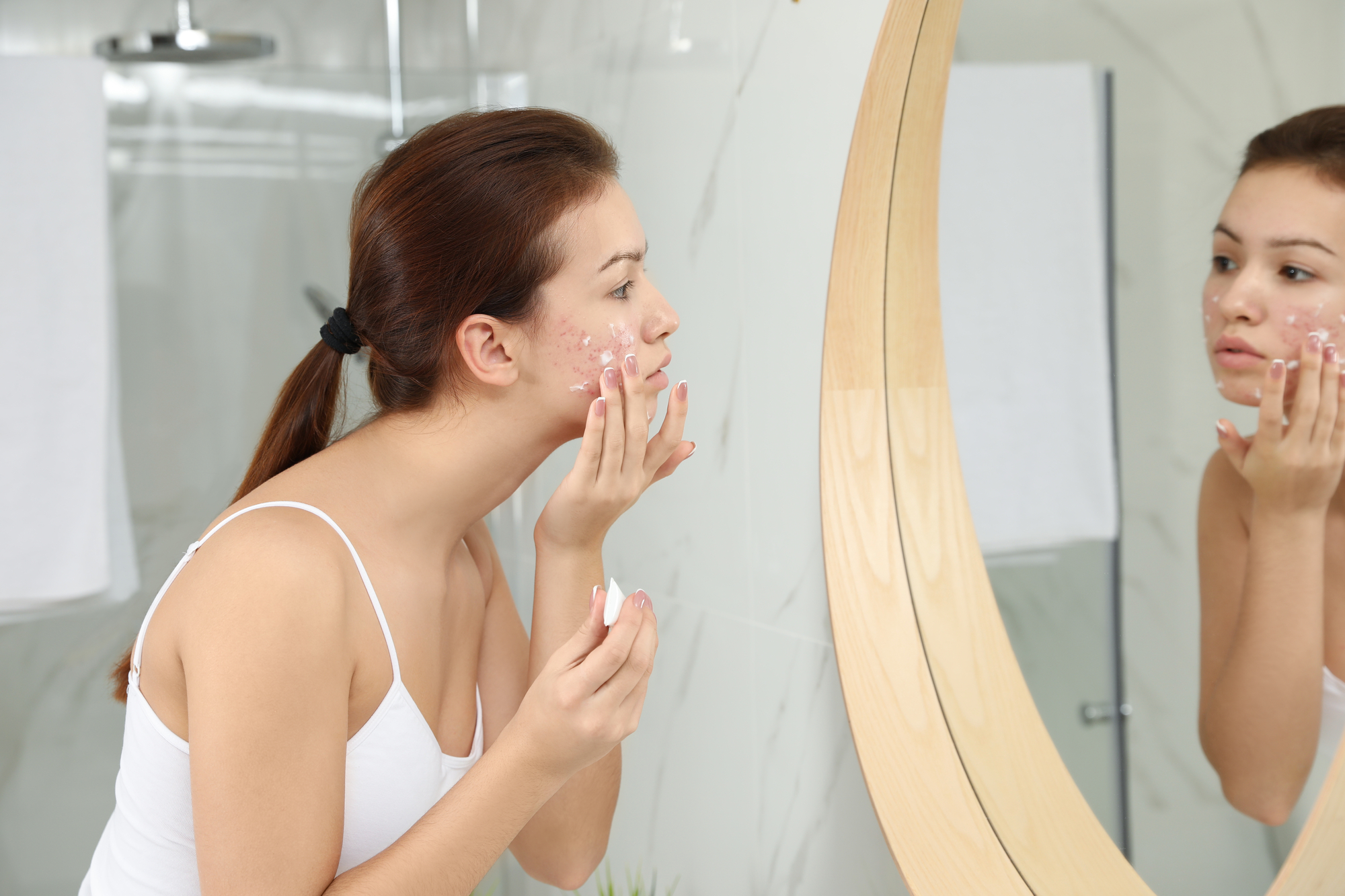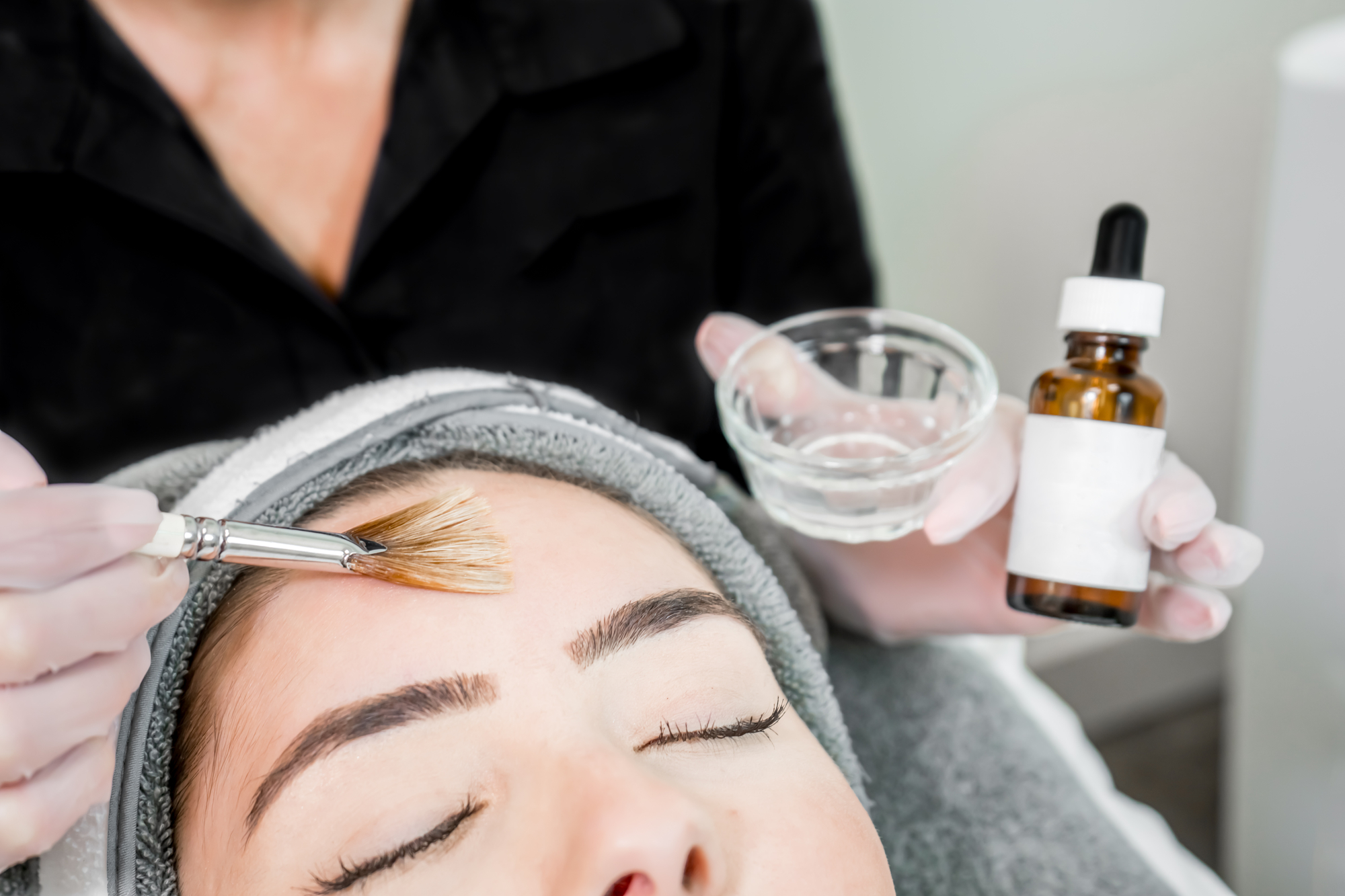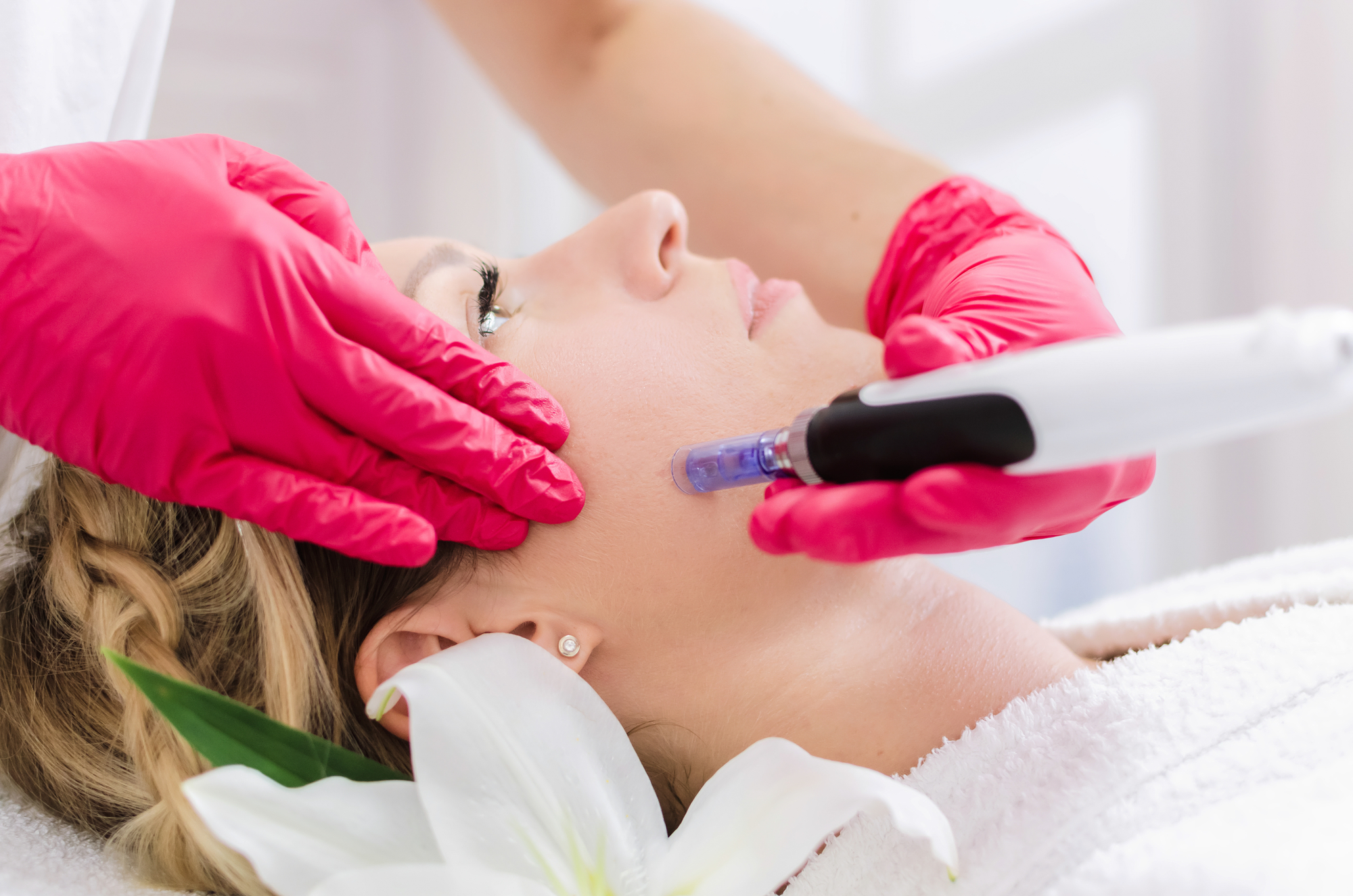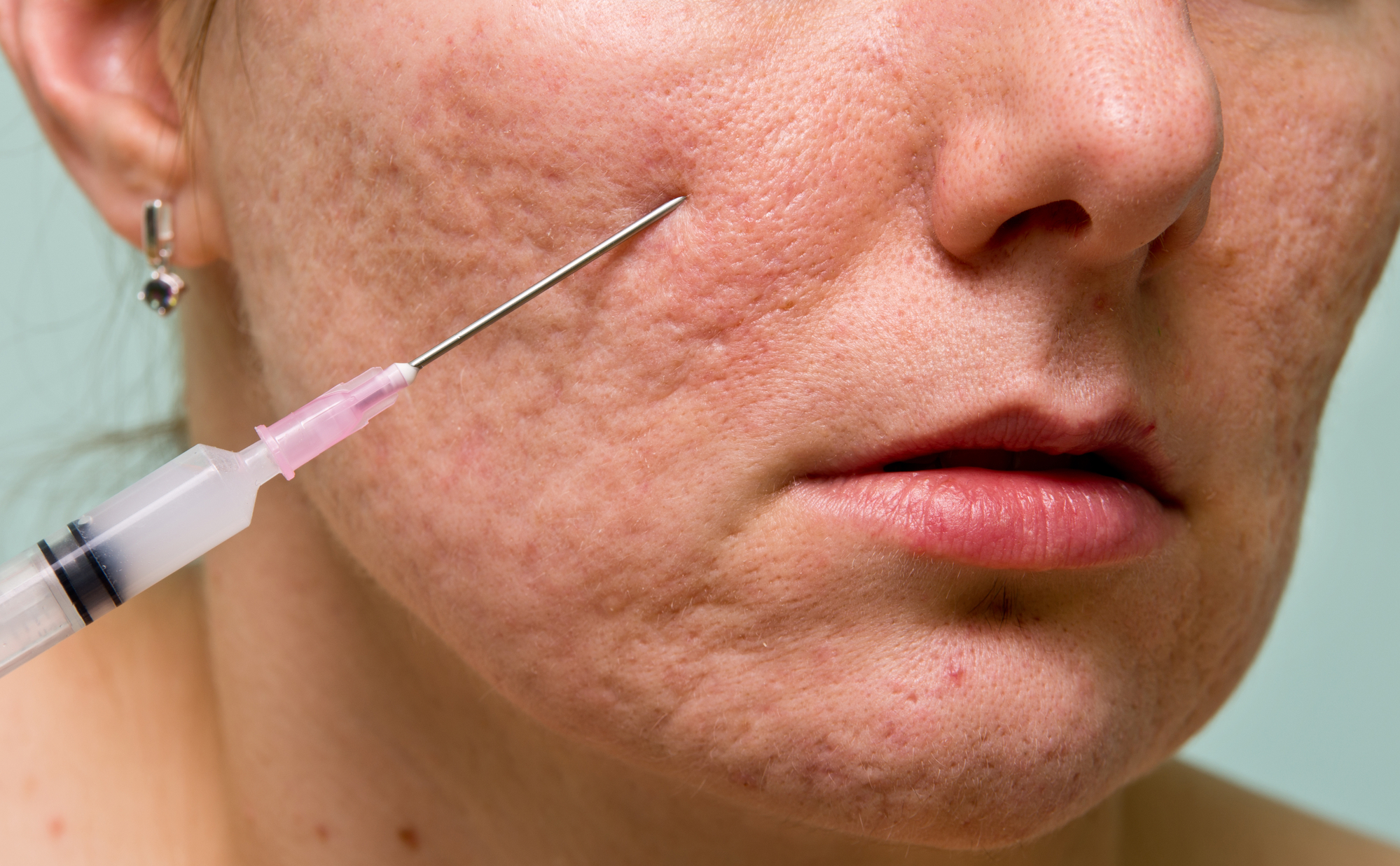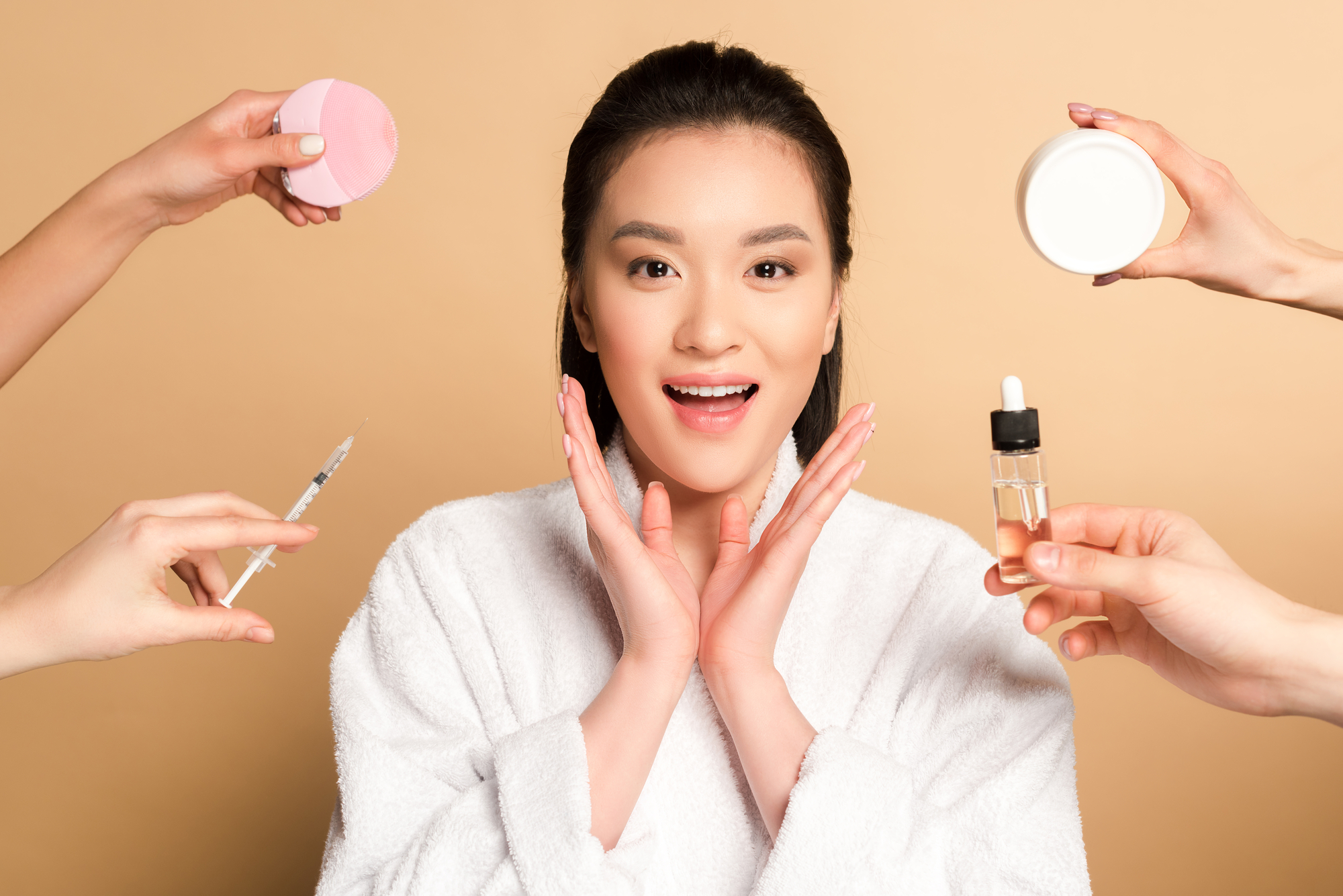Acne scars are formed when the skin doesn’t heal properly after a breakout. As a result, they can appear as deep pits, raised bumps, discoloration, or uneven texture on the skin. Acne scars are among the most common skin complaints for many people. They can be a source of frustration and embarrassment, making it difficult to feel confident in your own skin. Fortunately, acne scars don’t have to be permanent, as long as you choose the right treatment. Finding the right acne scar treatment can help to reduce the scarring and give you smoother, clearer skin.
Understanding The Three Types Of Acne Scars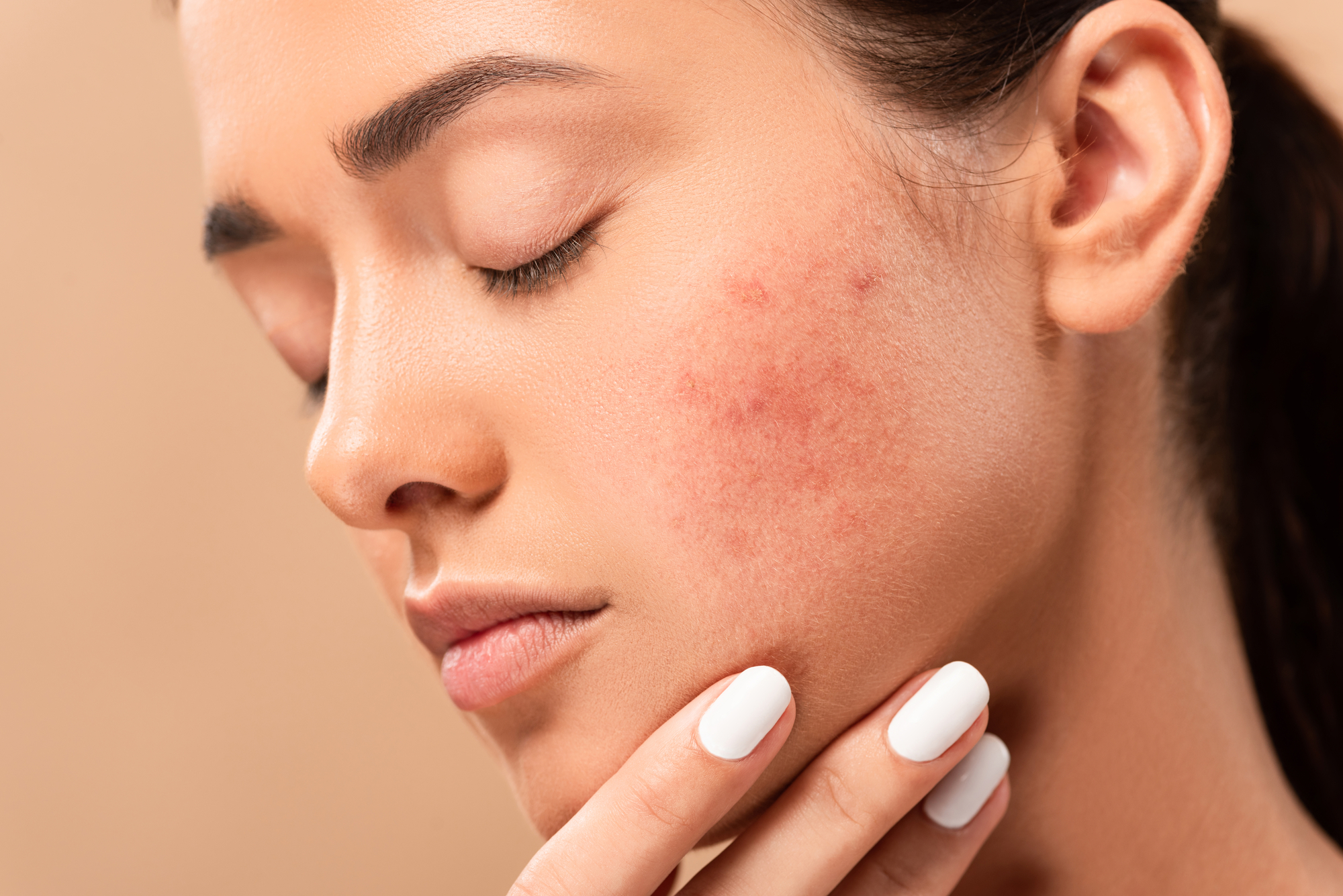
You’ll need to know what kind of acne scarring you have to properly treat acne scarring. Although there are many types of acne scars, there are three main categories: atrophic, hypertrophic, and keloid scars. What follows is a brief summary of each.
Atrophic Scars
Atrophic scarring is one of the most common types of facial acne scarring. These scars form when a severe acne breakout causes damage to the underlying tissue and not enough collagen is produced during the healing process This leads to a loss of volume and an indentation in the skin. These scars can vary in size and shape and can be shallow or deep. The following are the different types of atrophic scars:
- Ice Pick Scars: Ice pick scars are deep, narrow, V-shaped scars that resemble the shape of a pick used to break up ice. They can be difficult to treat because of how far they can extend beneath the surface of the skin.
- Rolling Scars: Rolling scars are broad depressions with wavy edges and a sloping appearance. They occur when fibrous tissue bands form under the skin, creating an irregular surface.
- Boxcar Scars: Boxcar scars are similar to ice pick scars but are broader and have more defined edges. They can vary in size, from small to large.
Hypertrophic Scars
Hypertrophic scars are raised, thick scars that form when too much collagen is produced during the healing process. Collagen is a fibrous protein in the skin that gives structure and strength. It’s produced naturally by the body, but it can also be produced in excess when an area of skin has suffered a severe injury or trauma in an attempt to repair the area.
Hypertrophic scars can be itchy and painful and tend to stay within the boundaries of the original wound. They are more common in areas with a lot of movement, such as the chest or back.
Keloid Scars
Keloid scars are raised, thick scars that form when too much collagen is produced. However, unlike hypertrophic scars, they grow beyond the boundaries of the original wound and are harder to treat. They tend to be red or purple, but they can also be skin-colored. Keloid scars can also be itchy, painful, and sensitive to the touch.
Post-Inflammatory Hyperpigmentation (PIH)
Although not considered “acne scarring,” PIH is a common side effect of acne breakouts. It’s caused when the skin produces too much melanin, resulting in dark spots lasting for weeks or months. PIH is most often found on darker skin tones. It is caused by inflammation due to acne breakouts, sun exposure, or even skin treatments.
What Causes Acne Scars?
The presence of acne does not automatically mean that it will result in acne scarring. Instead, the development of acne scars is caused by a variety of factors that include the following:
- Acne Severity: Acne scars are more likely to form if you have severe or cystic acne. When the skin breaks open from a severe breakout, it creates an open wound which can lead to scarring. Additionally, severe acne can result in a lack of collagen production during healing as well as too much collagen production, both of which can result in acne scarring.
- Acne Lesions Inflammation: Acne lesions that become inflamed due to excessive picking, squeezing, or rubbing can cause the skin to become damaged and lead to scarring.
- Squeezing Or Picking At Acne Lesions: Squeezing or picking at acne lesions can cause the skin to become damaged and lead to scarring.
- Genetics: Genetics play a role in the development of acne scarring and can determine how quickly or slowly your skin can heal from an acne breakout. For example, certain skin types are more susceptible to developing acne scars than others.
Acne Scar Treatments Available To You
Acne scarring can be a frustrating and embarrassing condition to deal with, and it can significantly impact your self-confidence. Thankfully, there are a variety of effective treatments available that can help get rid of unsightly marks. These treatments include:
Topical Treatments
Topical treatments are creams, ointments, and other products that can be applied directly to the skin. They work by soothing inflammation, reducing redness and discoloration, and helping to reduce the appearance of scars. Topical treatments often contain retinoids, which help to reduce inflammation and promote skin cell turnover. They can also contain exfoliants to help reduce the appearance of scarring.
Topical treatments are most effective for milder cases of acne scarring, such as PIH and shallow atrophic scars. Many over-the-counter products are available, but they may not be effective for more severe cases of acne scarring. When treating milder cases of acne scarring, it typically takes at least a month (sometimes longer) to see results from topical treatments.
Chemical Peels
Chemical peels are a type of treatment used to reduce the appearance of acne scars. They work by using powerful chemical solutions that help exfoliate the skin and remove damaged layers. Chemical peels can also help to stimulate collagen production, which can help repair damage caused by scarring.
Chemical peels come in different strengths and can be tailored to the individual’s skin type and condition. Depending on the solution used, chemical peels can be used for mild to severe cases of acne scarring. Although you may see some improvement following your first chemical peel, it typically requires multiple sessions over the span of several months to see optimal results.
The actual application of a chemical peel should only take a few minutes. However, it should only be administered by a professional in a clinic; only natural skin peels can be applied at home.
Laser Resurfacing
Microneedling
Microneedling uses very fine needles to create tiny punctures in the skin. Most patients barely feel any pain – if anything, it may cause very slight discomfort. Microneedling stimulates the body’s natural healing response which helps to stimulate collagen production and new tissue growth, thereby reducing scarring. It can also help reduce wrinkles, fine lines, and other signs of aging.
Microneedling is effective for mild to severe cases of acne scarring. Although you may experience benefits after the first treatment, you’ll need four to six treatments spaced four to six weeks apart to see the best results. The downtime after the treatment is usually short, but some redness and irritation may be present for a few days afterward.
Dermal Fillers
Dermal fillers are a type of cosmetic treatment involving the injection of soft, smooth materials beneath the skin to smooth out and fill in areas of scarring. Fillers are most effective for mild to moderate cases of acne scarring and can help to reduce the appearance of ice pick scars, boxcar scars, and rolling scars.
Dermal fillers typically take one to two weeks to work, and multiple treatments may be needed for optimal results. The treatment is quick, with minimal discomfort and downtime. In some cases, it can cause some redness that may last a few days, but this usually fades quickly. It is important to note that fillers are not permanent, as the materials injected will eventually be broken down by the body.
Subcision
Subcision is a slightly invasive treatment used to reduce the appearance of acne scars. It works by using a sharp instrument to break up the fibrous bands that cause the appearance of acne scars. It is most effective for deeper, more stubborn acne scarring, such as boxcar and rolling scars. The procedure works by cutting through the fibrous bands that attach the scar to deeper layers of the skin, causing them to release and resulting in a smoother, less visible appearance.
Subcision can be performed under local anesthetic and typically takes around 30 minutes to complete. Results may be seen after one treatment, but multiple treatments may be required for the best results. You may experience a little bit of redness and swelling after the procedure, which can last up to a few days.
Steroid injections
Steroid injections involve the injection of a corticosteroid solution directly into the scar, reducing inflammation and helping to break down scar tissue. This helps to reduce the appearance of acne scars and improve skin texture. Steroid injections are most effective for mild to moderate cases of acne scarring. They can treat ice pick scars, boxcar scars, and rolling scars.
Steroid injections are relatively quick and take around 10-30 minutes to complete. Results can be seen within a few days and multiple treatments may be needed for optimal results. After the procedure, some redness and swelling may occur which can last for up to a few days. However, steroid injections should not be used on active acne, as they can cause further inflammation and irritation.
Determining The Best Treatment For Your Acne Scars
When trying to find an effective acne scar treatment, there are a few key factors that should be considered. It is essential to consult with a dermatologist or skin care professional to determine the best treatment option for you. The best acne scar treatment will be determined by your individual needs, as well as the type and severity of scars you have. With that in mind, the following factors should be taken into consideration when deciding on a treatment:
- Type Of Scars: Different types of acne scars respond better to different treatments, so it is vital to identify the type and severity of your scars. For example, ice pick scars may be best-treated with dermal fillers or laser treatment, while rolling scars respond better to subcision.
- Severity Of Acne Scars: Different treatments may be recommended based on the severity of your acne scars. For mild to moderate cases of scarring, topical treatments or microdermabrasion may be recommended, while more severe cases may require more invasive treatments, such as laser resurfacing.
- Skin Type And Tone: Different skin types and tones may react differently to treatments, so it is important to consider this when selecting a treatment. For instance, darker skin tones may be more prone to discoloration and hyperpigmentation after treatments, so a gentler approach may be recommended.
- Budget: Treatments for acne scars can range in cost, from topical creams to laser treatments. It is crucial to determine a budget and discuss pricing options with your dermatologist.
- Chemical Or Natural Approach: Some people prefer to go the more natural route when treating acne scars, while others may lean towards chemical treatments. Discuss the pros and cons of each with your dermatologist to determine the best approach for you.
- Availability And Accessibility: Depending on your location, you may or may not have access to certain treatments. Be sure to research what options are available in your area before deciding on a treatment plan.
Get The Most Appropriate Acne Scar Treatment For You
Acne scars can be treated effectively with various treatments depending on the type and severity of scarring. Be sure to consult with a dermatologist or skin care professional to determine the best acne scar treatment for your individual needs. Your dermatologist will be able to assess your skin type, tone, and scarring to recommend the most appropriate treatment option for you. Contact us at Natural Skincare Clinic in Denver, CO today for more information about treating acne scars.
With time and persistence, you can minimize or even eliminate your acne scars completely.

